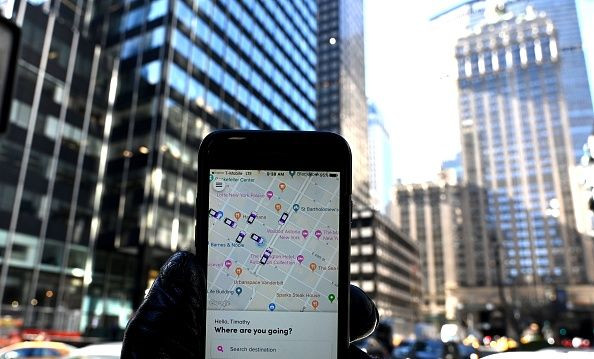Lyft's IPO Failure Has Been Greatly Exaggerated

It's been about a week since Lyft's (NASDAQ:LYFT) stock went public, but already, many investors have rushed to judgment about the ridesharing company's prospects for future success. The share price spent so much of this week below its $72 per-share offering price that Lyft quickly gained a label as a busted IPO. A rush of negativity about the launch sought to highlight the risks and less attractive attributes of the company.
Yet amid all the hype, Lyft has actually done an admirable job of going public in a way that almost perfectly balances the interests of investors and the company itself. In an era in which many investors expect to see huge first-day jumps for IPOs, Lyft might not have delivered the success that some of its early shareholders would have preferred. But it will take far longer than a week for a fair assessment of whether the fledgling business can grow to its full potential.
The true purpose of an IPO
It's important for investors to remember that the underlying purpose of an initial public offering isn't just to create a market for shares. IPOs are also intended to help companies raise cash for additional investment. The more cash a company can get for its initial shares, the more it can invest in growing its business without having to return to the capital markets later for additional funds through follow-up offerings that dilute the company's value.
With that in mind, it's pretty clear that the modern measure of IPO success -- the size of the first-day jump -- is fundamentally flawed. If a newly public stock doubles in price on its first day from its IPO price, then it's a huge win for those who participated in the offering. But it's also a big loss for the company because it essentially offered shares at half of what the market thought their true value should be.
Consider what happened right before Lyft went public. Leading up to the IPO, the ridesharing service had anticipated pricing its stock at between $62 and $68 per share. If it had gone with the $68 price, then Lyft's first-day jump would've been 15% rather than 9%. And although the stock has flirted with lower prices, it didn't close below that $68 level in its first five days of trading. It closed Thursday at $72.
Yet because Lyft dared to price its offering $4 per share higher -- reaping about $130 million in extra cash for the company -- potential new investors seem to have a completely different opinion of how the IPO went. Critics are blaming Lyft's losses for holding back excitement about the future of the company's business and they seem to be looking for reasons to be downbeat about Lyft's strategic vision.
Where will Lyft be in seven years?
The more important reason why all the first-week hype about Lyft is meaningless is that investing has nothing to do with how a company does in seven days and everything to do with how it does over seven years -- or longer.
To be fair, there are plenty of good reasons to be skeptical about Lyft's long-term prospects. Losses have been extensive and are getting worse, with 2018's $911 million in red ink marking a 32% jump from 2017's loss levels. Lyft has a clear duopolistic competitor in Uber, and a host of other upstart ridesharing providers are also competing for riders.
Even automakers are getting into the game, looking potentially to offer services of their own and potentially bypassing the intermediary opportunity that Lyft and others are seeking to exploit. Some investors also weren't happy with the voting control that co-founders Logan Green and John Zimmer retained through their retention of stock in a special share class with superior voting rights.
Yet Lyft could look a lot different in seven years. Active ridership, the number of rides, and overall revenue have been growing sharply over the past few years, and revenue per active rider has been increasing, as well. Lyft seems to be gaining a core audience of loyal riders, and controversy about Uber has pushed some customers to consider Lyft as an alternative.
There has been a lot of discussion about the treatment of drivers for ridesharing companies, but those problems could disappear entirely if the autonomous driving technology that Lyft is working on eventually makes having a person at the wheel unnecessary. The fact that car giant General Motors has a stake in Lyft also reduces the chances that automakers will seek to do an end-run around ridesharing and instead will make partnerships with the leaders of the industry.
Lyft's ups and downs over its first week of trading make for good headlines, but in the context of investing in the company, they're irrelevant. It'll take years to judge Lyft's true success, and it might come in a form that no one can even foresee right now.
This article originally appeared in the Motley Fool.
Dan Caplinger has no position in any of the stocks mentioned. The Motley Fool has no position in any of the stocks mentioned. The Motley Fool has a disclosure policy.





















